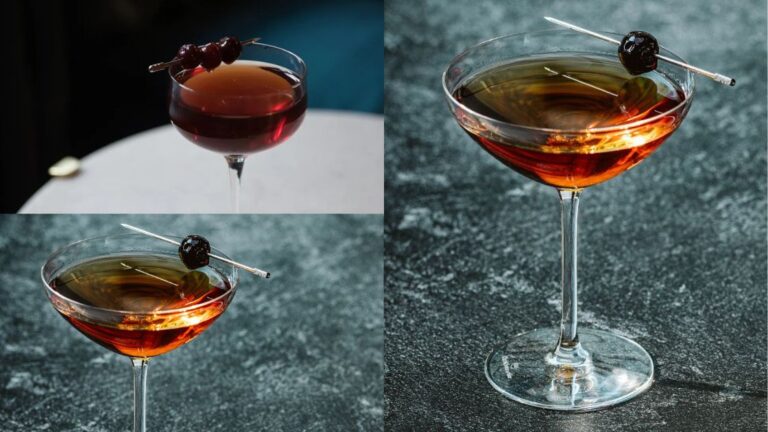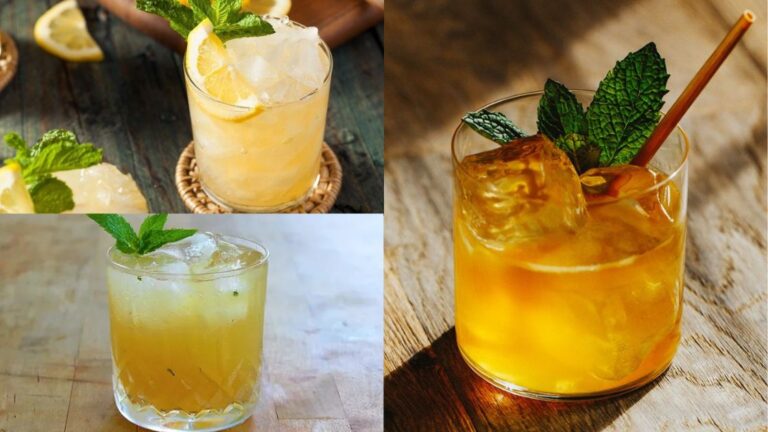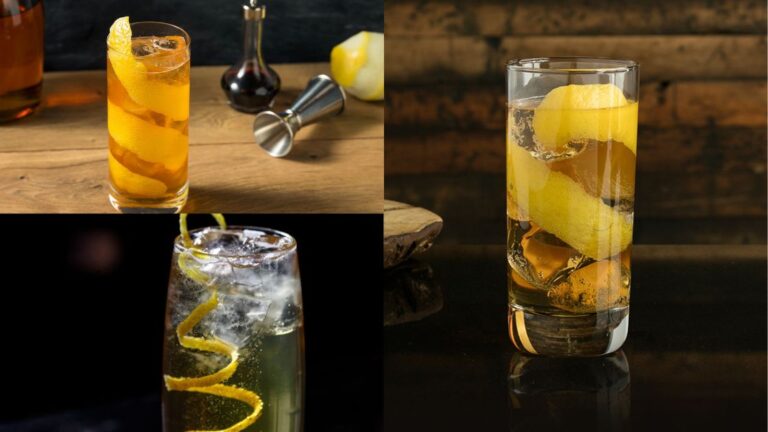Whiskey, alternatively spelled as whiskey, is a spirited alcoholic concoction primarily crafted from a fermented blend of grains such as barley, corn, rye, and wheat. The creation of this captivating spirit unfolds through a fascinating process that includes distilling the fermented mash of grains and maturing it in distinctive wooden casks, typically charred white oak. Intriguingly, every step in this process, from fermentation to maturation, and everything in between, leaves an indelible mark on the Whiskey’s character, subtly shaping its flavor, color, and aroma.
Delving into the mysterious roots of Whiskey, we find a hazy narrative with both Ireland and Scotland asserting their claim as the cradle of this esteemed beverage. The annals of history do note the existence of Whiskey production as early as the 15th century in Scotland, where tax documents refer to it as “Aqua Vitae”, Latin for ‘water of life’.
Interestingly, the art of Whiskey distillation was initially the domain of monks who had the requisite knowledge and tools. Initially conceived as a medicinal brew, the process of Whiskey distillation gradually evolved, leading to the creation of more refined variants that soon captured the public’s fancy.
The captivating allure of Whiskey crossed the Atlantic in the 18th century, brought to American shores by Irish and Scottish immigrants. This potent spirit found fertile ground in the grain-abundant regions of Pennsylvania and Kentucky. It was here that Bourbon, a uniquely American Whiskey defined by its corn-rich blend and maturation in fresh charred oak barrels, was born in the late 18th century. Today, Bourbon stands as an emblem of the American spirit, in every sense of the word.
In the present day, Whiskey is a celebrated global spirit, savored in every corner of the world. Different countries, each with their own distinct regulations and traditions, produce their own unique versions of Whiskey, contributing to an impressive spectrum of styles and flavors. So now that we know some basics, let’s delve deeper and answer the question “What Is Whiskey and How Is It Made?”.
The Diverse World of Whiskey “What is Whiskey”
A Tour of Different Whiskey Varieties
1. Scotch Whisky
Scotland’s gift to the world, Scotch Whisky, affectionately known as Scotch, is an aged spirit matured in oak barrels for at least three years. There are several varieties of Scotch Whisky, such as Single Malt, Single Grain, Blended Malt, Blended Grain, and Blended Scotch Whisky. Each type brings forth a unique symphony of flavors and aromas, often reflecting the characteristic traits of the region in Scotland where it was lovingly crafted.
2. Irish Whiskey
Irish Whiskey, recognized for its smooth and light profile, is a triple-distilled spirit aged for a minimum of three years in wooden casks. Traditionally crafted in Ireland, it typically employs a blend of malted and unmalted barley in the mash. Once hailed as the world’s most popular spirit, Irish Whiskey saw a decline in the 20th century but has recently staged a robust comeback, reclaiming its place in the global Whiskey scene.
3. American Whiskey (Bourbon/Rye)
American Whiskey comes in many styles, the most notable being Bourbon and Rye. Bourbon, primarily made in Kentucky, must be made from at least 51% corn and aged in new charred oak barrels. It’s typically full-bodied with notes of vanilla and caramel. Rye Whiskey, which can be made throughout the U.S., must be made from at least 51% rye grain. It often has a spicier or fruitier flavor compared to Bourbon.
4. Canadian Whisky
Canadian Whisky, often smooth and light in style, is aged in oak barrels for a minimum of three years. It’s typically made from a mix of grains, with corn often being the dominant one. Rye grain is also commonly used, leading to the term “rye” often being used colloquially in Canada to refer to any type of Whisky.
Key Differences Between These Types
The key differences between these types of Whiskey primarily lie in the ingredients used, distillation process, aging rules, and geographical influence.
For instance, Scotch Whisky tends to use malted barley and is often double distilled in pot stills, while Irish Whiskey typically uses a mix of malted and unmalted barley and is usually triple distilled. American Whiskey, specifically Bourbon, is made primarily from corn and aged in new charred oak barrels, which imparts a distinctive flavor profile, while Rye Whiskey, also an American product, is made mainly from rye grain.
Furthermore, geographical indication also plays a role in the classification of whiskies. Scotch Whiskey must be made in Scotland, Irish Whiskey in Ireland, Bourbon mostly in the United States (with Kentucky being most famous), and Canadian Whiskey in Canada.
These factors combined give each type of Whiskey its unique flavor and character, contributing to the diversity and richness of the world of Whiskey.
The Whiskey Production Process “How Whiskey is Made”
Malting
Malting begins with the barley being soaked in water and then allowed to germinate. During this stage, the barley is kept under carefully controlled conditions of temperature and humidity. After a few days, once the barley has started to sprout, the germination process is stopped by drying the grains in a large oven called a kiln.
The purpose of malting is to convert the starches in the barley into fermentable sugars. This process begins during germination when enzymes are activated within the grain that start to break down the starch. These sugars will later be converted into alcohol during fermentation.
Mashing
Once the malted barley is dried, it is ground into a coarse flour known as grist. The grist is then mixed with hot water in a process called mashing. This mixture, known as mash, is stirred to help the remaining enzymes in the malt convert the remaining starches into sugars.
The mashing process is essential in releasing the maximum amount of sugar from the grist. The sweet liquid that is extracted, known as wort, contains the sugars needed for the fermentation process.
Fermentation
The wort is transferred to a large vessel called a washback, usually made of wood or stainless steel, where yeast is added. The yeast ferments the sugars in the wort into alcohol, producing a liquid known as ‘wash,’ with an alcohol content similar to beer.
Yeast plays a crucial role in Whiskey production, converting the sugars from the malted barley into alcohol. Different strains of yeast can also contribute different flavors to the Whiskey, adding further complexity to the final product.
Distillation
The wash is then distilled, usually twice, in copper pot stills. The first distillation takes place in the wash still, and the second in the spirit still. During distillation, the liquid is heated to the point where the alcohol and certain flavors become vapor, which then cools and condenses into a liquid again.
Stills play a significant role in the production of Whiskey. The shape and size of the still can influence the character of the final product. Taller stills with long necks often produce a lighter, more refined spirit, while shorter, fatter stills can give a richer, heavier spirit. Copper, the material from which the stills are made, also plays an essential role in removing unwanted compounds from the spirit.
Maturation
The distilled spirit, now known as new-make spirit, is transferred into oak casks where it will mature over time. During maturation, the Whiskey will develop a significant portion of its flavor and acquire its color.
The type of cask used for maturation greatly impacts the flavor and color of the Whiskey. American oak casks, for example, can impart vanilla and coconut flavors, while Spanish oak casks can provide rich, fruity, and spicy notes. The previous contents of the cask (such as bourbon, sherry, or wine) can also influence the Whiskey’s flavor. The Whiskey also becomes smoother and more complex during maturation, as it interacts with the wood and the air.
Whiskey Tasting: The Art and Science
Understanding Whiskey Tasting Notes
Tasting notes are a fundamental aspect of appreciating Whiskey. They refer to the description of the aroma, taste, and finish of a Whiskey as experienced by the taster. The nose (aroma) can include a wide array of scents such as fruits, spices, malt, oak, and more, depending on the Whiskey. The palate (taste) often mirrors the nose but may have additional elements, while the finish describes the lingering flavors after swallowing.
Understanding tasting notes involves learning how to identify these different elements. This skill can be developed over time, with practice and exposure to a range of whiskies.
How to Taste Whiskey Effectively
Effective Whiskey tasting is a multi-sensory process, involving sight, smell, and taste, and there are several steps to enhance the experience:
- Visual Examination: Start by examining the color of the Whiskey, which can provide clues about its age and cask type. Swirl the Whiskey gently in the glass and observe its viscosity – this can give hints about the alcohol content and body of the Whiskey.
- Nosing: Before tasting, inhale the aroma (nose) of the Whiskey. Doing this a few times can help you identify the different scents present. Remember, a lot of what we perceive as taste actually comes from our sense of smell.
- Tasting: Take a small sip of the Whiskey and let it coat your tongue. Try to identify the different flavors. Is it sweet, bitter, spicy, or smoky? The taste can be broken down into the initial taste, the middle palate, and the finish or aftertaste.
- Finish: After swallowing, pay attention to the aftertaste or the finish. How long does it last? What flavors linger?
- Adding Water: Adding a few drops of water can sometimes open up a Whiskey, revealing more complex flavors and aromas. This is particularly true for cask strength whiskies.
Remember, the process of tasting Whiskey is subjective and personal. What matters most is whether you enjoy the Whiskey and the experience of tasting it.
Conclusion
Whiskey, a celebrated and complex spirit, is made from a simple process of fermenting grain mash, distilling it, and aging the result in wooden casks. The journey of Whiskey production, from the selection and malting of grains, through mashing, fermentation, and distillation, to maturation in carefully selected casks, contributes to the distinctive characteristics of each bottle.
Across the globe, Scotch, Irish, American, and Canadian whiskies each offer unique expressions, with variations stemming from geographical indications, ingredient choices, and production methods. Each type is a testament to its heritage and craftsmanship, encapsulating a rich tapestry of flavors.
Understanding the intricate art and science behind Whiskey making enhances our appreciation for the beverage. This knowledge allows us to interpret the myriad flavors and aromas we experience when tasting Whiskey, linking them back to the grains used, the yeast’s work during fermentation, the choice of stills during distillation, and the type and treatment of casks used for aging. It’s this complex fusion of elements that gives rise to the spirit’s diverse and intricate palette.
In summary, Whiskey is more than just a drink. It’s a captivating blend of art, science, tradition, and innovation. By deepening our understanding of its production process, we can fully savor the depth and breadth of experiences that Whiskey offers. I hope this article has answered the question “What Is Whiskey and How Is It Made?” to your satisfaction. Cheers!





